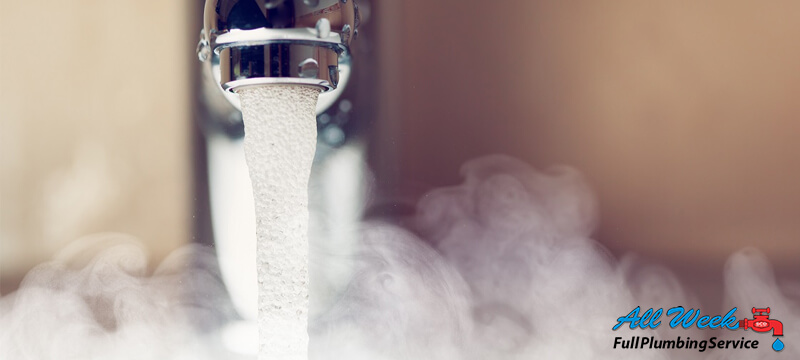- Serving Our NJ Neighbors 24/7 (888) 333-2422
Are you faced with slow hot water?

There are a lot of things that take place that determines the time it takes for the water from your water heater to get hot.
Have you been faced with a situation where you are freezing naked under the shower waiting patiently for the water to get hot? If you are wondering why it takes so long for water to get hot, or you are plagued by slow hot water, here are answers to your questions.
There are a lot of factors that involved in getting a water heater from your water heater to your fixtures. The most significant reason why it takes longer for hot water to get to your fixture is the distance of the water heater to the fixture; another reason is the type of pipe used in your plumbing system. Options of pipes include galvanized iron pipes, copper pipes, copper tubing, plastic pipes or plastic tubing.
One significant factor that should determine your choice of the pipe is the ability of the pipe to absorb heat. Other factors to consider are; is your selected pipe insulated? What is the ambient temperature around the piping? And the speed of water through the pipe.
Tankless water heaters contribute to slow hot water
One factor that also determines slow hot water from your fixture is the type of water heater that you use. If you have a huge storage type of water heater filled with hot water, what is left is to fill the pipes and you will be getting hot water in no time, better than when you use tankless water heater. The tankless water heater will first heat the water before sending it to you; this will consume more time.
The diameter of your pipes also determines the time it would take
A gallon of water will fill 63 feet of 1/2 inch galvanized iron pipes, 36 feet of 3/4 inch galvanized pipe, or 20 feet of 1 inch galvanized pipe. If you are using type K copper pipe, a gallon of water will fill 88 feet of 1/2 inch pipe and 44 feet of 3/4 inch pipe.
This means if your faucet is set for 2 gallons per minutes, and you have a 1 inch galvanized pipe, the hot water would be traveling at the speed of 41 feet per minute. On the other hand, if you have 1/2 inch type K copper pipe, the water will be traveling 176 pee minutes, this shows a significant difference between the two options. This means that the smaller the diameter of your pipe, the sooner the hot water reaches your fixture, given the same flow rate.
The piping material also contributes to slow water delivery.
The galvanized pipes are thicker and heavier when compared to the copper pipes this will make the galvanized pipes absorb more heat from the water as it flows through it. This means with the same length it will take more time for galvanized pipes to get hot water than copper pipe.
Season factor- the temperature around is also a determining factor
During the winter it would take more time before hot water gets to the fixture when compared to the summer season. This is because the surrounding temperature is low. The colder the environment, the more heat would be sucked out of the pipe, and the more time it takes for the hot water to get to your fixture. Insulating the pipe will help a little.
Fixture flow rate is a significant factor in the speed of the water through the pipes.
Years ago you only got shower head that permits flow of over 7 gallons per minute, but these days things are of low flow. Most shower heads now are limited to 2 gallons per minutes and faucet are below 1 gallon per minute. This ironically makes it longer for hot water to get to the fixture.
An instant hot water system using a pump to speed up the water.
There are other alternative ways to speed up the hot water to your fixture. An example is the use of pumps. Different manufacturers produce different types of hot water pumping system; they are designed to speed up hot water to your fixture.
The older system styles make use of pumps to circulate hot water like a loop, starting from the water heater through to the hot water piping and back. With such a system, you get to enjoy the almost instant hot water. However since it requires continues circulation, it requires more energy to keep it running leading to the extra cost. Running a pipe from the last fixture and back to the water heater is also very expensive.
Hot water on demand system
Another idea to speed up the flow of hot water is the use of an on-demand type of hot water system. Using a demand type system, the cold water piping is used as the return line back to the water heater. If you need hot water, all which is required is for you to press the “demand” button. The pump then gets turned on and then circulates water through your pipes until the water reaches your pump. Once the water reaches your pump, it shuts down automatically to prevent cold water from mixing with hot water.
This will give you instant hot water each time you turn on your shower or tap. You will not have to wait while water is run down the drain. Using an efficient pump, the hot water will get to your fixture extremely fast.
If your current pump makes you wait for lengthy periods before you get hot water, then you can quickly switch to a hot water pump that saves time, water and energy. Some pump system can help you and your family save up to 10,000 gallons annually.





